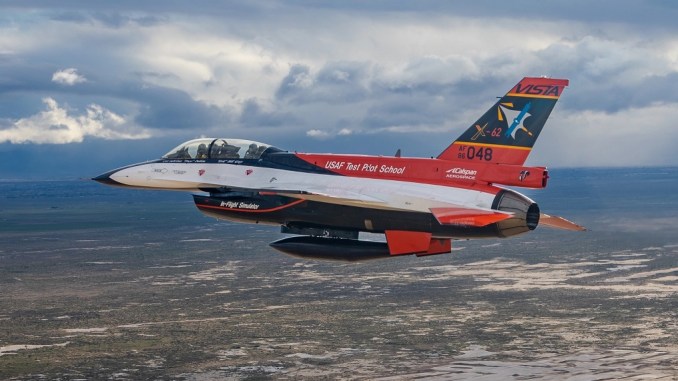In an extraordinary leap forward in military aviation technology, the U.S. Air Force, in collaboration with the Defense Advanced Research Projects Agency (DARPA), has successfully conducted the first-ever simulated dogfight between an AI-controlled aircraft and a human pilot. This landmark event took place over Edwards Air Force Base in California, heralding a new era in the capabilities of artificial intelligence within aerospace.
The aircraft at the center of this pioneering test was the X-62 Variable In-Flight Stability Test Aircraft (VISTA), which has been part of the Air Force Test Pilot School’s curriculum since its inception as an F-16D Block 30 in 1992 before being upgraded and redesignated as the X-62A in 2021. This test forms part of DARPA’s Air Combat Evolution (ACE) program, aimed at integrating AI-driven autonomy in air combat to match and eventually surpass human capabilities in certain aspects.

The X-62A, equipped with AI, engaged in tactical maneuvering against a manned F-16 within visual range during the test. Although both aircraft performed high-speed, nose-to-nose engagements at 1,200 miles per hour and distances as close as 2,000 feet, the AI’s performance was noteworthy for its precision and adherence to safety protocols, which were rigorously observed throughout the simulation.
The test pilots onboard the X-62A could override the AI at any time, though no such intervention was necessary, underscoring the reliability and safety of the AI systems under test conditions. Throughout the program, more than 100,000 lines of critical flight software have been modified across 21 test flights, enhancing the AI’s capabilities in real-time tactical decision-making.
Secretary of the Air Force Frank Kendall highlighted the significance of this achievement, stating, “The potential for autonomous air-to-air combat has been imaginable for decades, but the reality has remained elusive until now. This breakthrough by the X-62A ACE team marks a transformational moment in combat aviation.”
DARPA’s ACE program is not solely about enhancing combat tactics but is also a comprehensive approach to evolving AI applications within the aerospace sector. This includes potential future uses in both commercial and defense applications, promising a new frontier of autonomous flight technology that is safer and more efficient.
The implications of this successful test are profound, signaling a shift towards more AI-integrated functions in military operations. It also sets a foundational standard for future developments in AI technology within the aerospace industry, with ongoing research poised to expand into broader applications that could revolutionize how aircraft are piloted and air missions are conducted.
As AI continues to evolve, the lessons learned from the X-62A’s tests will undoubtedly influence future military strategies and capabilities, ensuring that the U.S. remains at the cutting edge of aviation technology. This milestone is not just a demonstration of technological prowess but a glimpse into the future of air combat and aviation safety, promising a scenario where AI and human skills are seamlessly integrated for optimal performance and strategic advantage.
Source: Youtube and theaviationist
Like this article? Keep up to date with AI news, apps, tools and get tips and tricks on how to improve with AI. Sign up to our Free AI Newsletter
Also, come check out our free AI training portal and community of business owners, entrepreneurs, executives and creators. Level up your business with AI ! New courses added weekly.
You can also follow us on X